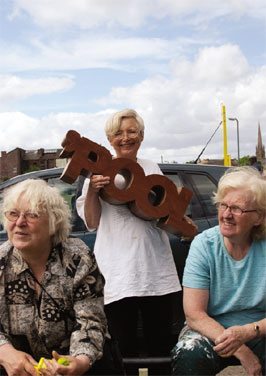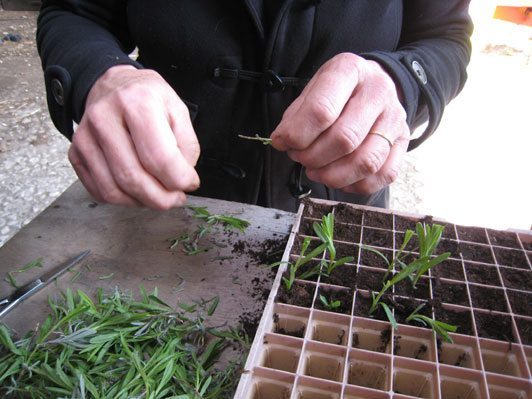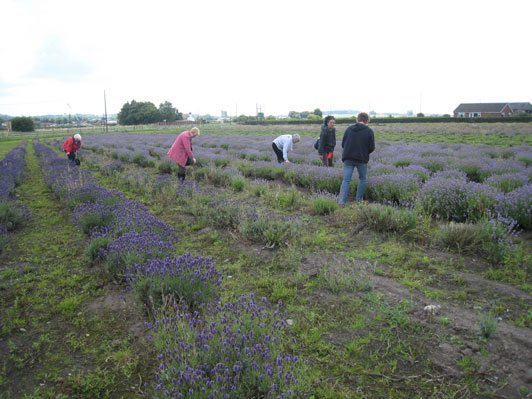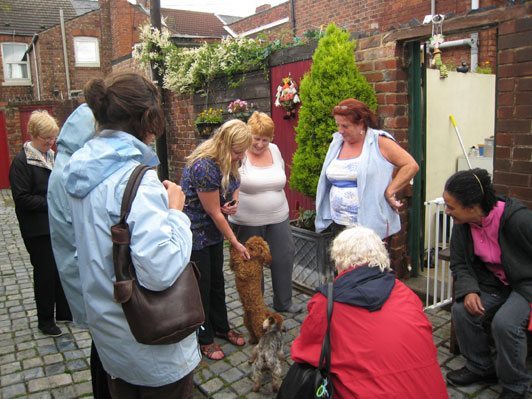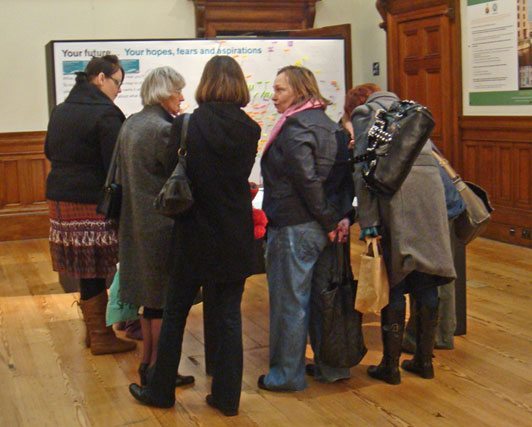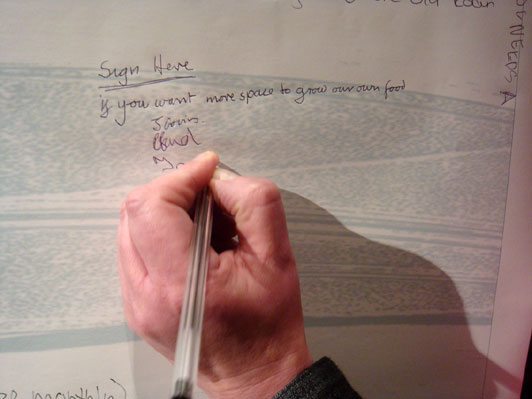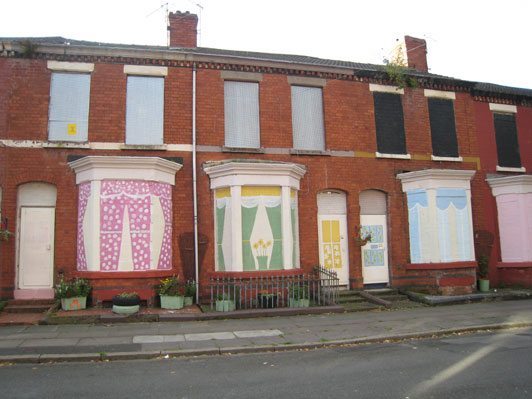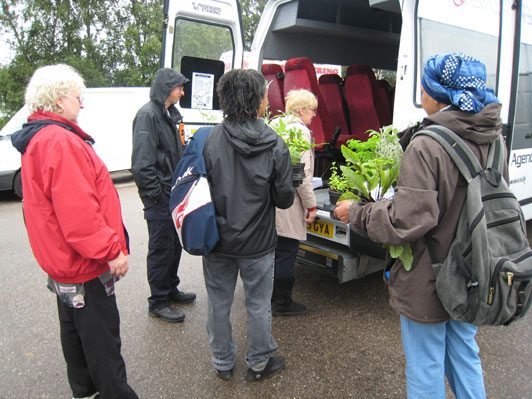Location: Liverpool, England
‘pool explores reveals and celebrates the origins of the city that forgot its namesake.
‘pool encourages discussion about the past in order to influence the future.
Everyone is welcome to join in.
LIVERPOOL’S NAMESAKE, THE TIDAL POOL, IS NOW HIDDEN below the city centre. Manchester Street and Dale Street follow the shape of the pool or bay made by the meeting of the salt water and the flow of a sweet water stream down what is now William Brown Street. The boats used to tie up where the Queens Tunnel now links the city with Birkenhead on the other side of the Mersey River.
Liverpool’s life pulse, the tidal pool, silted as the city developed canal and dock- building technologies, until it became invisible, and the burgeoning city forgot its namesake although affectionately calling the city ‘pool!
‘pool Project became a charity in 2005, but started its community work in 2002. Under the leadership of Jean Grant, its Creative Director, it deals with the history of Liverpool as a city made by its citizens. The focus is not only on the past, but also on the present and on the future of the ‘pool‘s citizens in their city. Ecology and the land use in the city are analyzed in innovative experiential ways through urban picnics, walks and celebrations of particular places in the city. These activities are open to everybody wanting to get involved and encourage people to come together and exchange their views and knowledge of life in Liverpool and the quality of its open space.
At the same time, positive documentation about the city’s not so well-known, or even forgotten history are collected and made available to a larger public, again by creative means such as street theatre, ephemeral artistic interventions and celebratory annual events. The aim is to reanimate the spirit of political participation by giving back the history and the historical map of the city to its citizens, enabling them to influence the city’s destiny by this new awareness of the relation between the city and its inhabitants and by the establishment of a PEOPLE PLAN as opposed to a Master Plan. A range of events have been realized over the years, which can be followed up on the ‘pool website: http://www.poolproject.co.uk/
I. GETTING INVOLVED
‘POOL HAS EVOLVED SEVERAL APPROACHES TO LIVERPOOL’S environmental problems. One has been the so-called Urban Picnics. This program brings people together for a walk in a particular place of the city, mostly wasteland, but also allotments or even the tunnel below the Mersey River. Each walk is themed, and its aim is to enable people to consciously examine their urban spaces to perceive how much of derelict and underused space actually exists in the city. Discussions throughout the walk and during the potluck picnics concentrate on possibilities to transform this unproductive and often ugly looking land into friendly space and to create a healthier city for all. The experience to be on such a piece of land and transform it, just by being there, gives local people a feeling of how much more enjoyable their city could be. It incites them to become more active around their own neighborhood. Informal and experiential mapping of the city’s underused open spaces, their types and location through such picnics increases the citizens’ awareness of the potential of their environment and how–with a little bit of imagination and engagement–they can contribute to enhance their own living space.
Urban Picnics are raising the understanding of the varied bonuses of introducing small open spaces in the city, demonstrating uses for underused or derelict land, and emphasizing the need in a healthy city for accessible open spaces of various sizes. They also encourage participants to take practical measures which will encourage a more creative use of open space. The transversal cooperation among architects, artists, environmentalists, historians and local communities is a process where everybody learns something new, particularly that a healthier urban environment is a task for all, not only for decision makers.
The result of this approach to environmental questions in the post-industrial city is very encouraging, as the shared skills at the events are beginning to be used practically on some of the sites and transversal networks between communities have been established. One of these visible results is the cooperation between ‘pool and Growing Granby.
II. GROWING GRANBY
THE EARTH.SEED.NUTURE.GROW PROJECT DEVELOPED WITH the findings of the ‘pool research plan for 2007 to explore transformative cycles within the city. It is a co-operation with Granby Adult Learning Centre in one of the poorest areas in Liverpool called Toxteth. Granby Adult Learning Centre, inspired by ‘pool activities invited ‘pool to run a course that explores land use in this neighbourhood notorious for dereliction demolition and failure to develop. Local residents wished to both learn to grow plants at home and to legally develop proper participation in the management of the area. The course started by planting seeds to grow on window ledges and back yards, visiting sites of production and provision in Liverpool and beyond and exploring the Granby area in detail to identify sites for sowing and growing. The participants of this project take their fate into their own hands, literally by getting them into the earth. Whilst learning about the history of unused and derelict space in the Granby Triangle, they are experiencing the annual growing cycle for their area, taking care of seedlings and enjoying their successes. This represented the solid ground for their empowerment and larger projects were envisaged. As they walk their area and go on trips, the Granby People Plan develops. Now the group has obtained the first area of derelict land for community gardening and they are working over cups of tea and plant exchange to develop supportive partnerships with the still hierarchical agencies managing the Granby area. Growing Granby is achieving something that traditional approaches to regeneration and community policy never had before: empowerment, self confidence and a local vision for the solution of environmental questions. ‘pool also reaches out with it ideas to the whole city, for example, with its annual festival called Seacycles.
III. SEACYCLES
SINCE 2002, SEACYCLES TAKES PLACE each September celebrating the tidal pool and Liverpool’s people’s rights to and fights for the common ownership of land. It is a grand community parade showing off banners and sea-themed costumes and puppets, ship shape features. They have been created in different communities, many of whom may rarely come into the city centre, and they come together retaking possession of public space in their city. From the steps of the World Museum, they stroll chatting down the route of the tidal pool through the busy commercial city centre toward the Albert Dock. People demonstrate their awareness of public space, their right to it, and thus represent symbolically that they are the living pulse of the city, the most important resource to transform the urban environment into a healthier living space for all.
Seacycles puts the current discussions about public and private space in cities in the agenda once a year. More and more public space is sold out and turned into a simulacrum of common land, looking public, but being possessed privately and therefore ‘un-reappropriatable’ for common citizens. The boundary of available common land has been pushed onto the edges of the water, as once Caryl Lord Molyneux had tried to do in the 17th century. ‘pool has learnt from the experience of the commons and our common wealth then, and aims at showing townspeople today how to bridge the gap between wasteland and ecologically sustainable land use in the town.
IV. BRIDGING THE GAP
THIS MOBILE COMMUNITY STREET THEATRE PIECE INVESTED all the historic places of the true tale of Lord Molyneux, owner of the town, and his bridge over the tidal pool to access and make his the common land on the other side. Following the actors on their road show in town gave the citizens a way to see below and beneath the city today: to discover how circular history is and how important it would be to break its vicious circle. The heroes from then were common people; they broke down the Lord’s bridge and successfully claimed their land back. The subsequent question is, therefore, who has the civil courage to stand up to the selling out of public space today? Using the techniques of Boal’s theatre of the oppressed, Bridging the Gap transformed all by-passers, followers and observers into active actors in today’s public space. Urban space gained another perspective, because people started to think. People’s capacity to think and to become pro-active in managing their own urban environment became very valuable for the production of a PEOPLE PLAN, which was the objective of an exhibition entitled The Settlement.
V THE SETTLEMENT
VERY SYMBOLICALLY THE VENUE FOR THE exhibition was the Community Gallery of the most important icon for civil self-esteem in Liverpool: St. George’s Hall. The exhibition combined with workshops lasted for three months – January 21 to March 15 – and due to its great success was invited to continue at the Foundation for Art and Creative Technology (FACT) from March 21 until 30 April 2009. This event was the culmination of ‘pool activities from 2005.
The exhibition showed the results of the sustained long term project that ‘pool has developed over several years to the broader public. It also showed the commoners’ history of their city and showed its potential for regeneration. Issues such as ecology, urban agriculture, and political participation were brought up and required feedback from the visitors in a framework that all could understand from their own experience. Therefore, the offer to position oneself on a map of the city of Liverpool and contribute with one’s own expertise of the city and its needs was well accepted and overwhelmingly exercised on all spaces available in the exhibition.
Regular workshops started at noon and were scheduled for 3 hours in a room on the same floor as the exhibition. People could register for these through the website, by e-mail or by phone. But many joined spontaneously, seduced by the opportunity to transform their own environment, and to be recognised as experts in surviving in the city in their own right among their peers. The subjects brought up by the exhibition were the starting point for the discussion during the workshops,
- to develop a PEOPLE PLAN for the future city
- to enable inhabitants to best use the unused open spaces and make a true local economy.
- Liverpool needs its local people; they have the expertise to survive here.
Liverpool residents were offered the opportunity to develop a plan over three months that would take into account what matters for them. The promise to liaise with the City Council and others to make the plan happen, on one hand, was an incentive for active participation. A high degree in participation, on the other hand, would be a gesture of trust and become an incentive to go forward with the PEOPLE PLAN beyond the promise to liaise with the City Council.
Other organizations that also deal with different aspects of environmental questions joined the exhibition programme with special events in the evenings or had stalls during the day, as was the case of Planning Aid, which came ready to discuss with the visitors their problems in dealing with the city. Others had never had a personal involvement in planning issues and wanted to know more about the official aspects of it. The Slow Food association had a demonstration how to prepare slow bread with organic ingredients from the region. Other organic food producers of the region were also present, showing their products in stalls. The Duncan Society followed up on the subject of food and public health on another evening.
VI. VISITOR’S EXPERIENCE
PEOPLE HAD THE LEISURE TO READ CONCISE INFORMATION presented in an appealing and humorous way, not through lecturing the visitor, but by inciting him to think about the city, its problems and how to participate in its change. The setting in St. George’s Hall fostered civil pride and self-esteem, and encouraged a belief that participation in the changes could make a difference and actually mattered to the city authorities. On average, 821 visitors came per day throughout the exhibition, proving the need. The City Lord Mayor personally identified with the content of the exhibition, speaking twice of his own feelings of being let down by the city of his birth.
Many spontaneous discussions regarding the changes in Liverpool around the table where the map of Liverpool was laid out, were impressive. The exchange between the generations was very intense and important, as it represented a rare opportunity for them to talk concretely about the changes in a lifetime. With the help of the map, older and elderly people explained in a very lively way to the younger generation the changes in the area where they used to live or still lived. Also the discussion and comparisons between people’s experiences in different quarters of the city were very interesting, and often created crowds around those who were telling their life experience. The regular presence of Jean Grant or other people linked to ‘pool was important to start leisurely conversations around the table. These were then perpetuated nearly automatically as the flow of new people joining the room went on.
The Settlement exhibition became an informal think tank for the common stakeholders in Liverpool’s open space management. Its seductive power also drew in the decision makers who enjoyed the occasion for leisurely discussions, but also experienced a productive way to analyze the problems of the city and discovered what people actually expect from policy makers.
The interest of the Lord Mayor of Liverpool, Councillor Steve Rotherham, to join Jean Grant at a Settlement public conference entitled: Land and its Healthy Use in Liverpool. How do we act for a healthier future? ‘The Settlement’: Environmental and Community Experience & Debate, is proof that the ‘pool has reached all levels of society with its message. The outlines for the conference hit the right nerve: ‘ the current wearying consultation processes, familiar to many, can induce feelings of despondency, at yet again not being heard, or having been heard, no action or facilitation ensuing. The need to be listened to, to be heard, to experience some influence and control over our local environment is healthy, but it too often leads to frustration, even anger and despair, which are decidedly unhealthy.’
‘pool has shown stamina in a very adverse situation where economic considerations are a priority. Throughout its existence, it has developed with the sensibility of environmental art and the implication of local communities how to deal with complex questions in an accessible way for all. Its sustainable growing success, which might seem small to many, has positive impacts on people and environment, and proves that different approaches to environmental questions in urban space are the way to involve communities and help them define, negotiate, and manage their own healthier and more ecological living spaces within the city.

